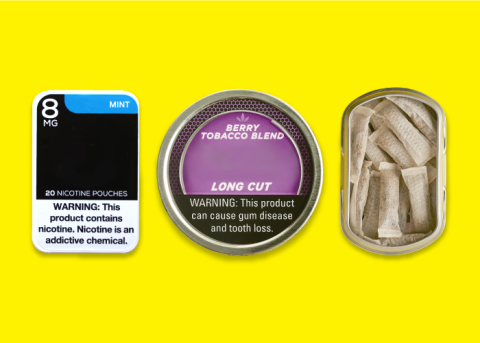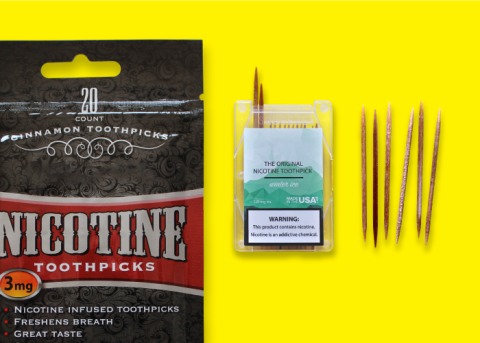Tobacco is Changing: Oral Nicotine Products
Talk to your teen about nicotine pouches, snus, and dip
Every year, half a million young people in the U.S. — mostly boys and young men — try oral nicotine products for the first time. While some oral nicotine products like snus contain tobacco, others such as oral nicotine pouches deliver lab-produced forms of addictive nicotine.
Whether it’s a pinch of flavored tobacco, a nicotine pouch or a wad of shredded tobacco leaves tucked behind the lip, the results are the same. Nicotine and other dangerous, cancer-causing chemicals are released into the bloodstream, increasing the user’s risk of addiction, illness, and even death.
The number of Wisconsin kids who’ve tried oral nicotine products rises quickly as children get older, from just 2% of middle schoolers to 9% of high schoolers. Similarly, about 1% of middle schoolers and 4% of high schoolers are current users.
What to look for
Oral nicotine products like pouches, snus, and chew don’t look much alike, but they all contain nicotine, an addictive additive that can change the way a young brain develops, especially the parts of the brain that control attention and learning.
- Pouches and snus are usually packaged in tins and plastic dispensers that look like mints or gum.
- Oral nicotine pouches and lozenges come in a variety of flavors.
- Shredded chewing tobacco is sold in paper pouches.
- There are even nicotine toothpicks!
Some of the health risks
We all know how dangerous cigarettes and secondhand smoke can be, so it’s easy to assume that oral nicotine products are safe, but dip, snus, and chew contain many of the same toxic chemicals found in cigarettes, including arsenic, lead, formaldehyde, and 30 known cancer causers. Other risks include:
- Addiction
- Tooth loss and decay
- Mouth sores, leathery patches, and gum disease
- Heart disease and stroke
- Cancers of the mouth, throat, stomach, and pancreas
Share what you've learned
Research shows that kids are more likely to avoid risky behaviors when they have an open, trusting relationship with parents and other caregivers, so talk to young people about e-cigarettes and share what you know with parents, teachers, and others.
You can tell your kids
- Oral nicotine products are not okay, even if some athletes use them. Athletes may do extraordinary things, but they’re still just people. Which means they’re vulnerable to addiction and unhealthy choices just like the rest of us. Oral nicotine products are addictive, carcinogenic, and deadly — even for athletes.
- Oral nicotine isn’t “better for you.” Flavors like mint, cherry, vanilla, and sour apple can give the impression that flavored dip, chew, and snus are safe, or mild version of conventional tobacco, but those flavors just help mask the harsh taste of tobacco and the thousands of chemicals in dip, snus, and chew.
- Smokeless doesn’t make it harmless. No tobacco product is safe. Dip contains more than 4,000 chemicals and at least 30 of them can cause cancer. Don’t forget, the addictive nicotine in smokeless products can change the way a young brain grows and may harm a child’s impulse control and ability to learn.
- Most young adults don’t use oral nicotine products. They may see the variety of dip, snus, and chew in stores, around their community, and assume using oral nicotine products is a popular choice.
- Remind your child that most Wisconsin youth choose to live tobacco free. In fact, 96 percent of Wisconsin high schoolers aren’t using dip, chew, or snus.
Resources
Learn more about cigars, little cigars, cigarillos and the harm they can do:
- Smokeless Tobacco and Kids
- Dip, Chew, Snuff, Snus: "Smokeless" Doesn't Mean "Safe"
- Smokeless Tobacco: Health Effects
More products, more risks
Tobacco keeps changing. Learn more about the other addictive tobacco products that are endangering the health of Wisconsin’s youth.
Support tobacco-free environments and prevention policies
We can react to Wisconsin’s tobacco problems, or we can use best practices, and proactive policies, that work together to prevent youth tobacco use and other statewide challenges. You can help make that happen. Find out how you can support comprehensive tobacco policies for a healthier state and take action in your own community.
Take the next step
Knowledge is power.
Find out how the tobacco industry creates, packages, and markets its dangerous products to hook young people in your community.













